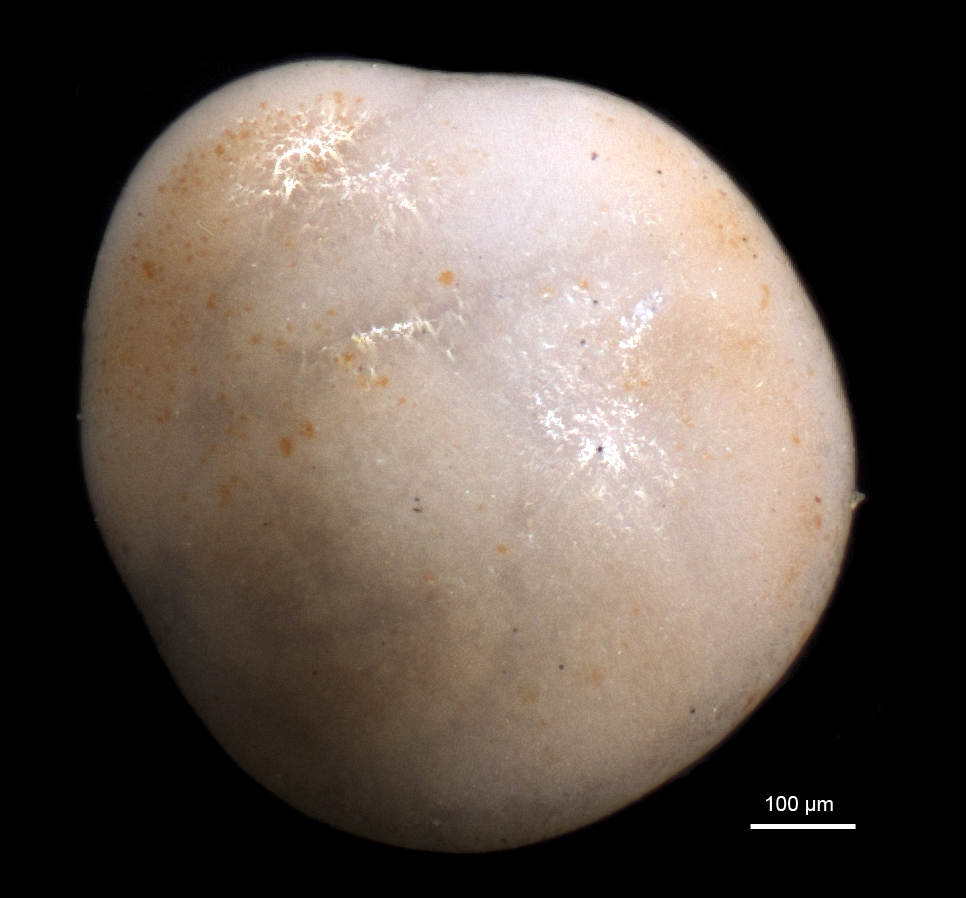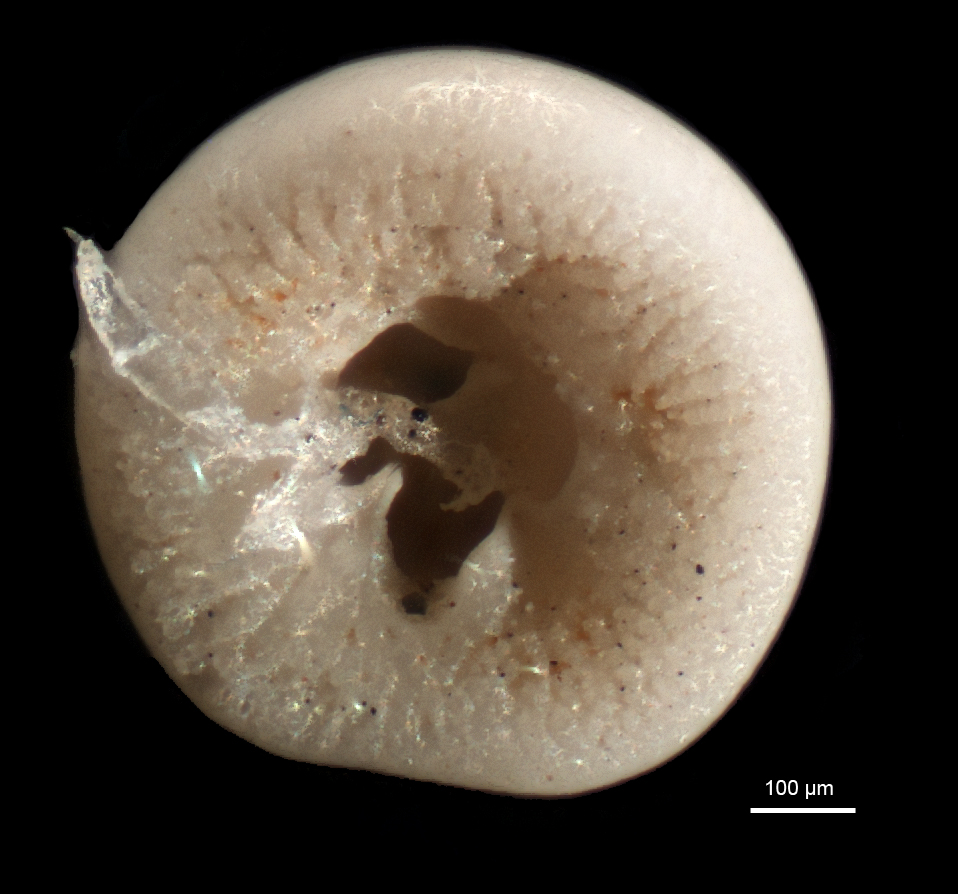Genus – Glabratella
Glabratella Dorreen, 1948
Description from Loeblich and Tappan (1964, C588): Test helispherical, all chambers visible from convex spiral side, only those of final whorl visible on flattened umbilical side, periphery rounded; schizont forms generally large and flatter; gamont more high spired; chambers relatively few, enlarging rapidly as added, suture arcuate on spiral side, radail on opposite side; wall calcareous, hyaline, perforate, spiral surface generally ornamented with pustules, umbilical side with radio ornamentation, consisting of fine grooves or tiny radially arranged pustules; aperture a small round opening restricted to open umbilicus.
Glabratella californiana Lankford and Phleger, 1973
Glabratella californiana Lankford and Phleger, 1973, p. 122, pl. 4, figs 27, 28.
Discorbina lauriei Herron Allen and Earland, 1924
Glabratella lauriei (Herron Allen and Earland) Seiglie and Bermudez, 1965, p. 41; McGann, 2007, p. 67, pl. 11, figs H1–2, I1–2.
Description: Test free, trochoid, ventral side flattened to concave; dorsal side strongly convex, test thickness from one-half to two-thirds of width; periphery broadly and smoothly rounded, margin smooth to broadly pentagonal; chambers few, usually five, rarely six, in the last whorl. Chambers increasing rapidly in size in first whorl, more slowly in adult whorl, usually 2½ whorls present, all chambers visible dorsally; sutures on both sides very gently curved backwards, slightly depressed in later chambers, sutures on ventral surface straight and radiate, very slightly depressed and limbate; wall thick, calcareous, with abundant pores on dorsal surface giving a granulate appearance; wall thinner on ventral side, perforate, ornamented with numerous fine papillae arranged in closely spaced rows radiating from umbilicus; aperture ventral in the central umbilicus; umbilicus of living specimens covered by a fine perforate somewhat inflated and irregular calcareous plate, irregularly stellate with projections extending along the ventral suture depressions. Greatest diameter of holotype is 0.34 mm.
Remarks: Species of the genus Glabratella live in the turbulent zone of coastal seas where they employ an unusual reproductive strategy. Loeblich and Tappen (1964) noted that a diagnostic character of the genus is reproducing with plastogamy —with two specimens attached by their umbilical surfaces. The apertural sides and internal septa are then dissolved, forming a single large brood chamber that enabls an exchange of gametes.
Distribution: In Puget Sound G. californiana is not common but is found in plastogomic pairs.


